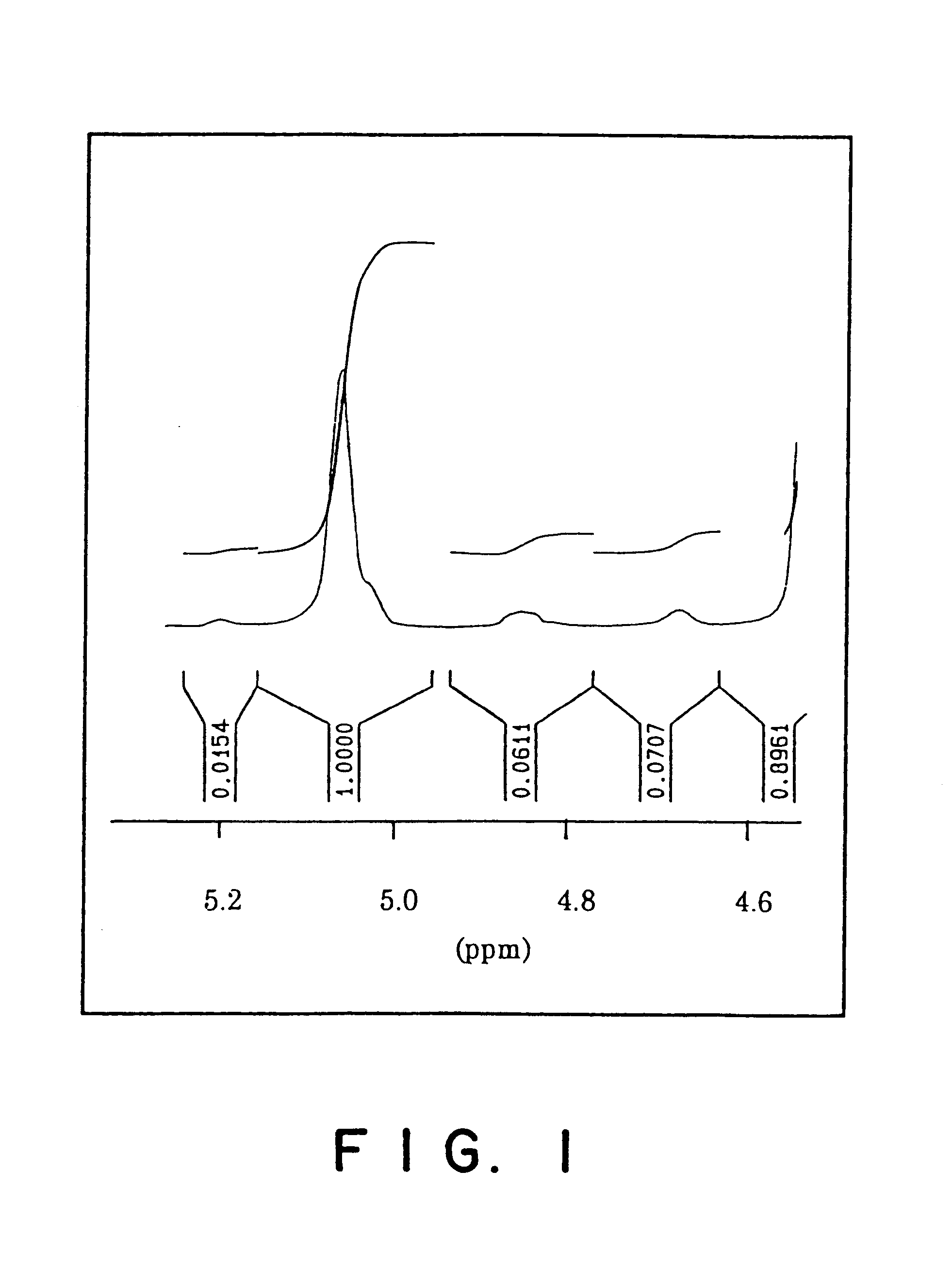Process for the manufacture of polyguluronic acids
a polyguluronic acid and manufacturing technology, applied in the direction of chemistry apparatus and processes, sugar derivates, organic chemistry, etc., can solve the problems of multiple steps, difficult to implement on a larger scale, complicated methods,
- Summary
- Abstract
- Description
- Claims
- Application Information
AI Technical Summary
Problems solved by technology
Method used
Image
Examples
Embodiment Construction
The present invention will be further clarified by the following specific example, though it is not limited to this specific example only.
(1) ALGlNlC ACID
Alginic acid used in the following specific example was prepared from a commercial sodium alginate (Kimitsu Chemical Industries; Product Name: ULV-L1G; average molecular weight: 10,000). 200 g of ULV-L1G was dissolved in 1.8 liters of deionized water with stirring. While stirring the solution, concentrated hydrochloric acid was added dropwise which resulted in precipitation of alginic acid. The addition of hydrochloric acid was continued until the pH of the mixture reached a value of 0.90. The mixture was stirred for an additional 4 hours and then set aside to stand for 12 hours. Most of the clear supernatant was discarded and the remaining mixture was filtered through a #2 Whatman filter paper to collect the off-white solid. The solid was air-dried for several days and then further dried under vacuum to a constant weight.
(2) PREPA...
PUM
| Property | Measurement | Unit |
|---|---|---|
| Angle | aaaaa | aaaaa |
| Acidity | aaaaa | aaaaa |
| Acidity | aaaaa | aaaaa |
Abstract
Description
Claims
Application Information
 Login to View More
Login to View More - R&D
- Intellectual Property
- Life Sciences
- Materials
- Tech Scout
- Unparalleled Data Quality
- Higher Quality Content
- 60% Fewer Hallucinations
Browse by: Latest US Patents, China's latest patents, Technical Efficacy Thesaurus, Application Domain, Technology Topic, Popular Technical Reports.
© 2025 PatSnap. All rights reserved.Legal|Privacy policy|Modern Slavery Act Transparency Statement|Sitemap|About US| Contact US: help@patsnap.com



